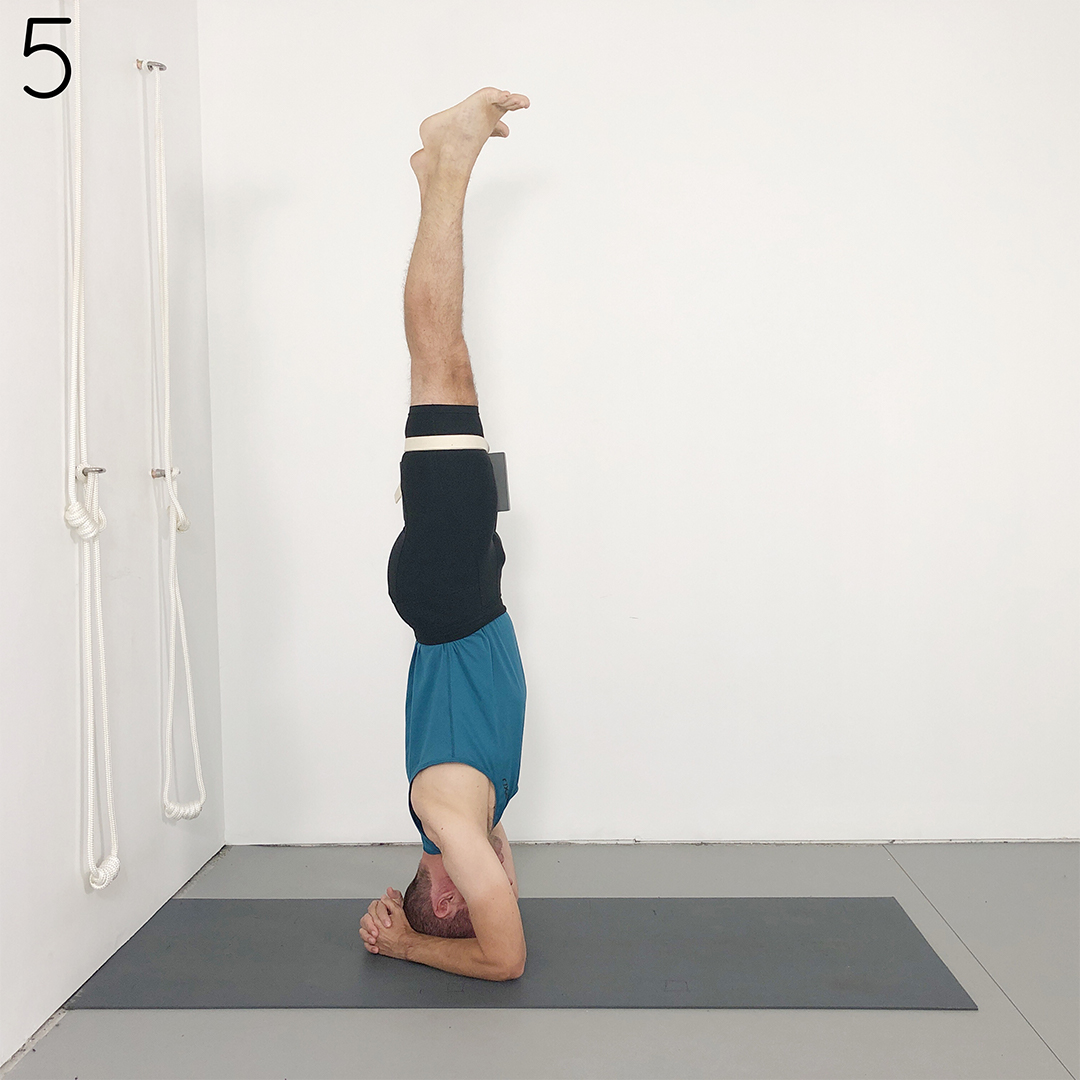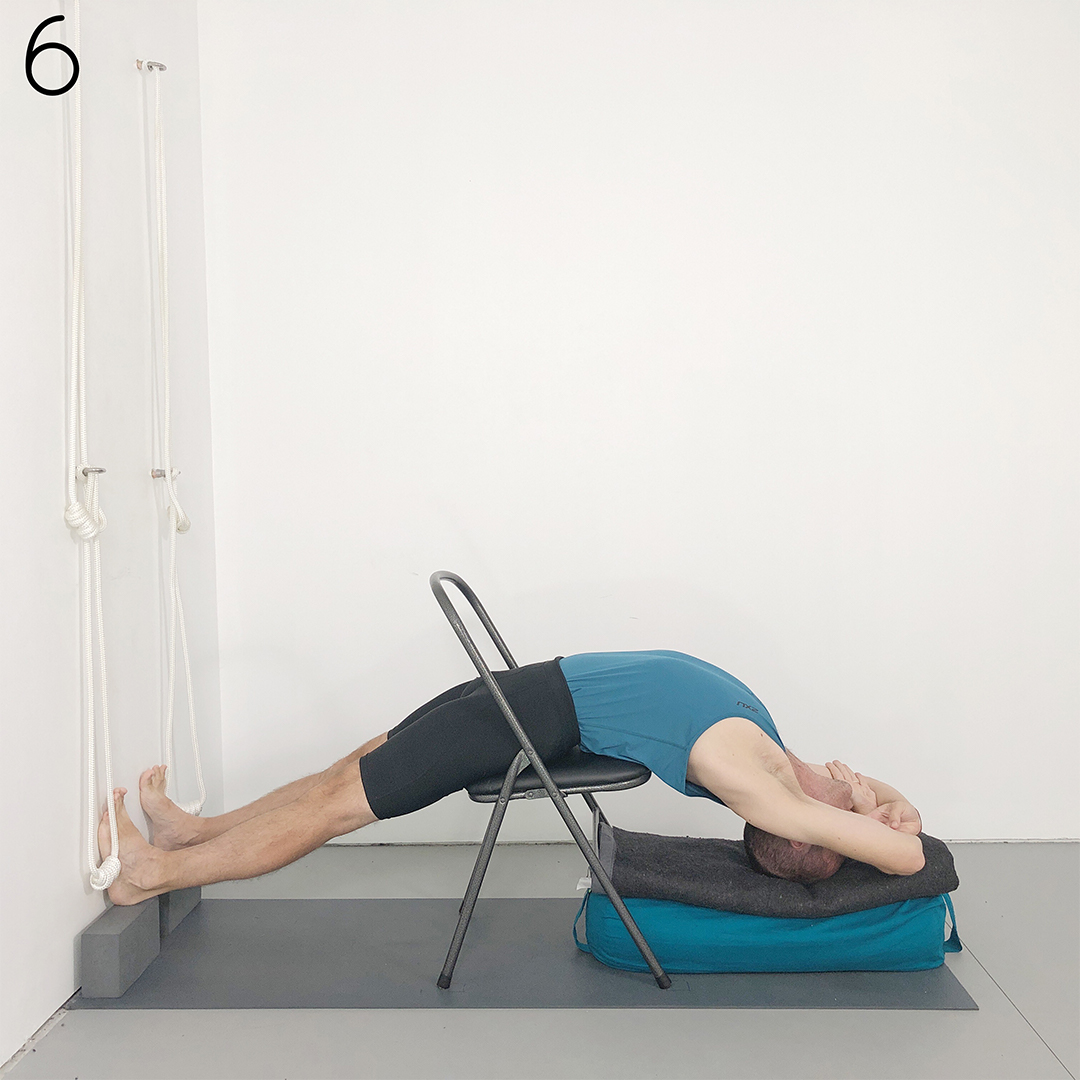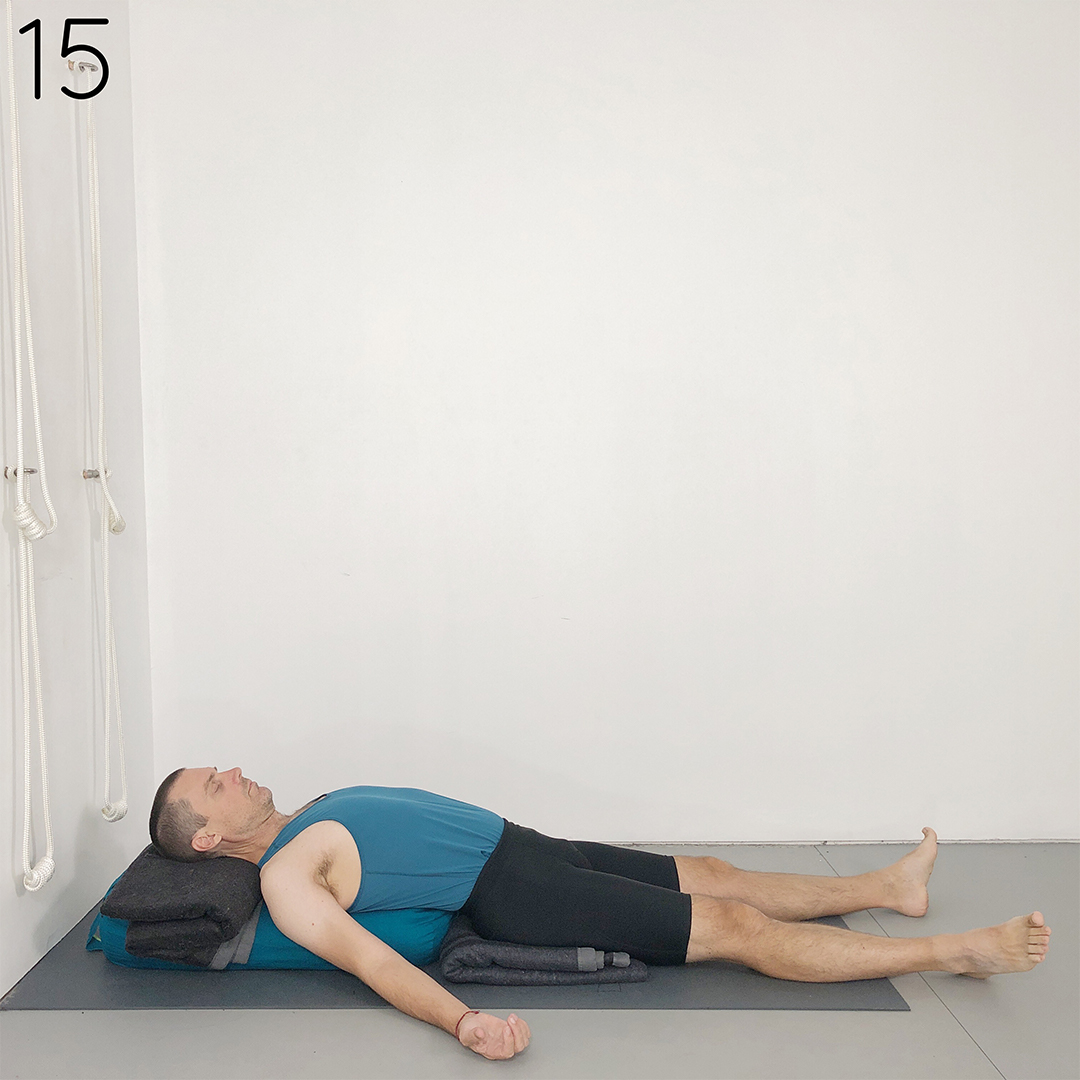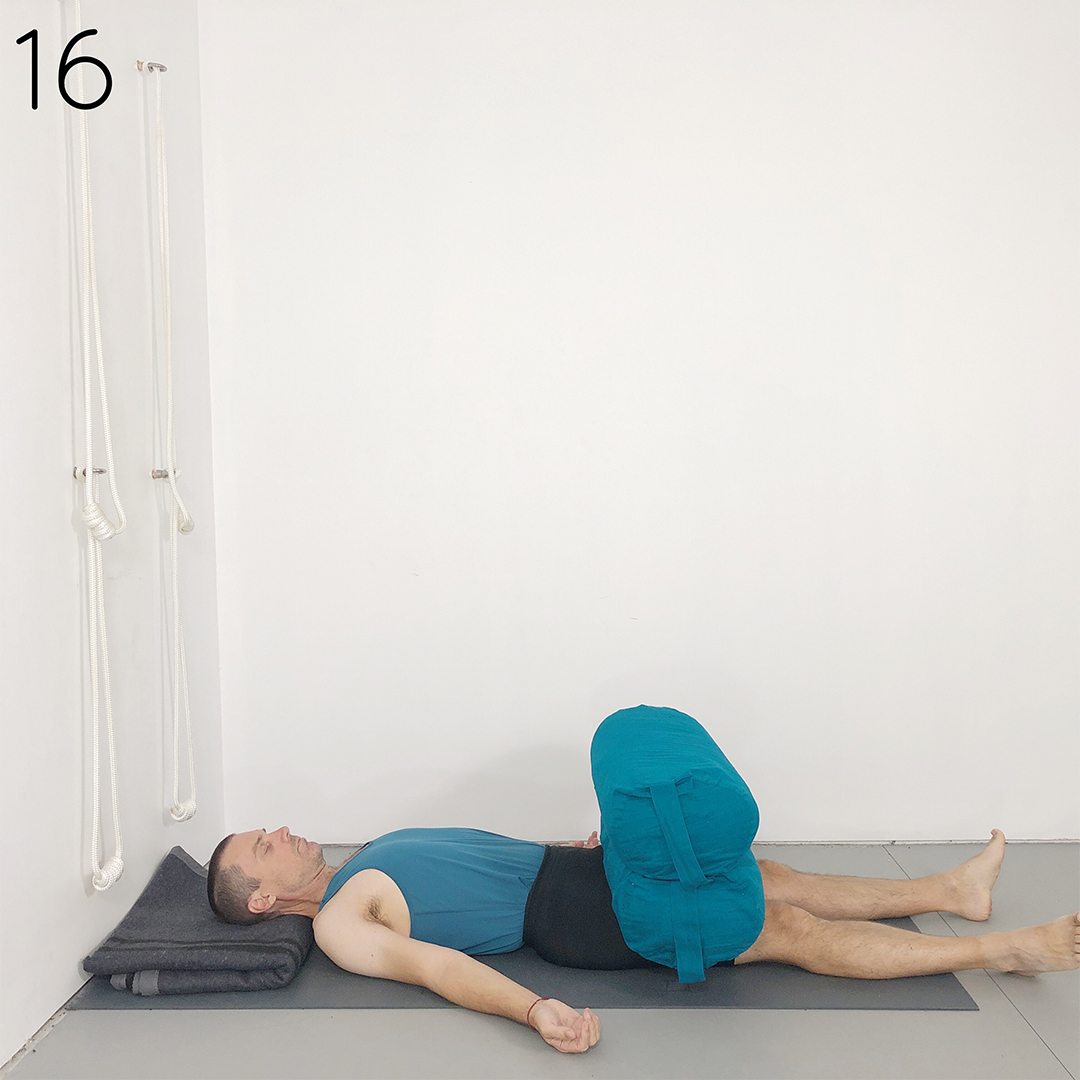Yoga for immune system support
Learn Iyengar yoga for immune system support in this step-by-step sequence. The Iyengar method has an extensive range of poses to draw upon during times when you are looking to boost your resilience against infections. We are all currently dealing with high levels of stress and anxiety about our own health and wellbeing, as well as the welfare of loved ones. Although in the current climate this is understandable, one of the best things you can do to help your immune system is to reduce your stress levels. The coronavirus yoga sequence outlined below guides you step-by-step through a range of poses that can provide a source of support during these challenging times.
Iyengar Yoga For Your Immune System
This sequence focuses on Iyengar yoga for your immune system. It contains a range of restorative poses to help you relax. These poses can reduce stress and therefore potentially minimise secretion of stress hormones known to suppress immune function. Inversions are also great poses to include when you are fighting off a viral illness. They can help to improve your overall circulation by allowing an easier return of venous blood flow back to the heart and lungs. This can be restful for your heart rate and induce a sense of wellbeing. If you are recovering from a recent respiratory infection, the chest opening inversions included in this practice can also help to increase aeration of your lungs and improve circulation around your sinuses. The balance in this sequence is weighted towards utilising yoga for immune system support.
COVID-19 Yoga Sequence
This COVID-19 yoga sequence is dedicated to the ongoing health, welfare and safety of home yoga practitioners around the world. May we all quickly return to more certain times. This class is a companion to Weekly Advanced Class 159 on yogaselection.com.

Iyengar Yoga Coronavirus Sequence
Supta Virasana
Supports: Bolster, blanket.
Basic Points
- Kneel in upright virasana with the bolster directly behind you.
- Keep your knees together but bring your ankles apart so that your hips can fit in-between your ankles.
- Ensure that your toes point directly back and your heels directly up.
- Lower yourself back over the bolster.
- Position a folded blanket under your skull so that your forehead and chin are level.
- Either place your arms by your sides with your palms facing upwards, or fold your arms with your hands holding your elbows and bring them to rest over your head.
Key Actions
- Once in the pose with an economy of effort press your outer shins down.
- This will contain your knees towards one another.
- But keep the inner groin region soft.
- Move your tailbone towards your knees.
- Observe how the above actions help to open your chest whilst softening your abdomen in a downward direction.
Modifications
- If you are working with a stiffer body it may be necessary to place a flat yoga block under your sitting bones. If you are doing this you may also benefit from lying back over two bolsters instead of one. Take additional height under your head if you are modifying the pose in this way.
- It may not be possible to keep your knees together when you lie back. Some people like to place a belt around both thighs for this reason, but gently squeezing a block placed between your inner thighs. This approach will be more in line with the above instructions.

Uttanasana
Supports: 2 yoga blocks.
Basic Points
- Stand with your feet hip width apart.
- Position your blocks in front of you.
- Bend forwards and place the blocks underneath your skull as a support.
- The blocks can be arranged in a variety of ways to result in a variety of heights.
- In this picture a tall block sits on top of a flat block.
- Adjust the block height so that your head comfortably reaches the support without you needing to lean forwards or bend your knees.
- Place your hands to the floor.
Key Actions
- Whilst resting/relaxing your head on the block support ensure that the sides of your neck are lengthening in an upwards direction away from your ears.
- Lift your inner shoulder blades upwards.
- Lift and broaden your shoulders.
- Bend your elbows outwards and away from your legs.
Modifications
- A chair can be used instead of blocks for stiffer bodies. Place your bolster on top of the chair if necessary.

Adho Mukha Svanasana
Supports: 2 Yoga blocks, clear wall space.
Basic Points
- This variation is is similar to your regular version of downward facing dog pose except your hands are turned out and placed against a wall with blocks positioned under your head.
- Place your thumbs and index fingers up against the wall ensuring that your wrists are shoulder width distance.
- As with the previous pose you can explore different combinations of block height so that your head easily reaches the support without your pose sinking. A block positioned on its side is used in this image.
Key Actions
- The block and wall will reduce some of the energetic action in the pose but not all. With an economy of effort ensure that your side ribs remain lifting upwards.
- Maintaining this lift ensure that this region is able able to expand each time you inhale.
- During each inhalation soften your eyes.
- With each exhalation avoid collapsing into the head support. The pressure felt by your head will ideally remain constant whether you are inhaling or exhaling.
Modifications
- It may be necessary to increase the amount of height that you are using under your head. A bolster underneath the block/blocks may be required for stiffer bodies.

Prasarita Padottanasana
Supports: Block/blocks.
Basic Points
- The floor can be a comfortable support for this standing pose even when it is included in more active sequences. If you struggle to bring your head as low as the floor then a block or blocks can be used as a support.
- Step your feet apart a wide distance. Your feet will be slightly wider than the length of one of your legs.
- Bend forwards and place your head either to the floor or blocks.
- Ensure that your hips align with your ankles rather than leaning forwards or backwards.
- Place your hands to the floor with your with your elbows bent straight backwards. Your hands will eventually be positioned directly under your elbows with your forearms and upper arms at right angles to one another. Fingers face forwards.
Key Actions
- For many people the outer edges of the feet tend to become light and benefit from being pressed down, but this is not necessarily the case for everyone.
- Check that your big toe bases and outer heels are firm to the floor.
- Lift your inner knees up.
- Lift your outer thighs up.
- Allowing your head to rest into the floor or support, lift the sides of your neck and shoulder blades up.
Modifications
- A chair can be used as a head support if blocks are too low. If this is the case then often blocks will also need to be used for your hands to maintain balance without too much pressure being placed on the forehead.

Sirsasana
Supports: Block, belt.
Basic Points
- In this variation of headstand a narrow width block is placed between your inner thighs and a belt is firmly strapped around both of your thighs.
- The block is placed high on your inner legs and is held between your inner groins.
- The belt and block needs to be fastened prior to coming to the pose.
- Raising your legs whilst keeping your knees straight is the preferable way of getting into position but if needed there is some scope for partially bending your knees.
Key Actions
- Ensure that both of your shoulders are lifting.
- Grip the block between your legs without hardening the muscles associated with your inner thighs.
- Lift the back of your pelvis upwards towards the block.
- Lift the block upwards and away from the back of your pelvis.
- Use the inner groins to move the block from the front body towards the back body.
- Synchronise the backs of your knees opening and soles of your feet projecting upwards.

Virparita Dandasna
Supports: 2 blocks, yoga chair, blanket, bolster.
Basic Points
- The set up for this pose may need to be adjusted to accomodate individual needs but a helpful reference point is to arrange the pose so that your heels and the top of your head are at the same height when seen from the side.
- Place 2 blocks on their side edge up against the wall. Place them wide enough apart so that when your heels eventually rest on the middle of the blocks your feet will be hip width apart.
- Position the chair with the back of the chair facing the wall. The distance away from the wall will vary according to your height. The proportions in this image will assist in this regard but will need to be optimised for each individual.
- Place a bolster behind the chair. One end of the bolster should come slightly underneath the edge of the seat of your chair.
- Place a lengthways half fold blanket on top of the bolster.
- Come into the pose by sitting through the frame of the chair and lying back. Initially your knees are bent and your feet are flat to the floor.
- As you lie back over the chair position yourself so that the lower edge of your shoulder blades have come slightly off the edge of the seat of the chair.
- Ensure that your head makes firm contact with the bolster and blanket. Your head makes contact with the bolster but your shoulder blades and the sides of your neck lift up and away from the bolster.
- Lastly, place your heels up onto the block and ensure that your knees are straight.
- Your arms can now fold with hands holding your elbows. Bring your folded arms down to rest onto the support. Add height (such as additional folded or rolled blanket) to support your forearms if they do not easily reach.
Key Actions
- Contain the fronts of your thighs in a downward direction.
- Allow your abdomen to release in a downward direction.
- Allow your whole throat region to dilate and release back into the body.
- Ensure that your chest and side ribs are lifting and open.
- Soften your breath.

Chair Sarvangasana & Variations
Supports: Chair, bolster, blankets.
Basic Points
- With practice this pose can be done with your chair placed directly against the wall. This allows your legs to be kept in a more vertical position. Initially leaving a gap between the wall and your chair will give you more control when entering the pose.
- If you are less experienced with this pose leave a gap between the back of your chair and the wall. This distance is roughly half the width of the seat of the chair.
- Position the bolster so that it lies underneath the seat. Allow sufficient overlap with the bolster so that it can support your upper back when you are eventually in the final position.
- The set up in this pose will potentially vary from person to person. Taller people may need to add blanket height to the seat of the chair, whilst shorter people may need to boost the height of the bolster.
- When well adjusted your sacrum will comfortably rest near the edge of the seat without it pushing uncomfortably into your lower back.
- Your weight is evenly spread between the back of your pelvis, your shoulders/upper back and the back of your skull.
- Ensure that the back of your head has sufficient cushioning against the hardness of the floor. An extra blanket may be necessary for this purpose.
Key Actions
- To enter the pose sit on the chair with your heels hooked over the top of the chair. Your hands grip the side frame of the chair.
- Lie back so that your shoulders/upper back come to rest onto the bolster.
- Check that your sacrum is positioned comfortably near the edge of the seat.
- Check that the back of you head comfortably reaches the floor.
- Reach one arm at a time through the insides of the legs of the chair and hold the back legs of the chair.
- Lastly, slide your heels up the wall so that your knees are straight.

- From here you can bring your legs away from the wall so that your ankles sit directly over your hips.
- If you are unable to relax your abdominal muscles with your legs in this position return your heels to the wall.

- To come to this version of chatushpadasana bring the soles of your feet down to the top of your chair.
- So that you are able to maintain the balance of the chair when your feet eventually press down walk your hands higher up the back legs of the chair.
- Press down with your feet and lift your pelvis upwards and off the chair.
- Move your back ribs in and lift the sides and front of your chest upwards.
- Keep your throat relaxed.

Niralamba Sarvangasana & Ardha Halasana
Supports: Chair, 2 bolsters, 2 blankets.
Basic Points
- Place two flat sarvangasana fold blankets on your mat.
- Position a bolster on top of the blankets. This bolster lies across your mat.
- Position a second bolster in a t-shape configuration butted up against the first bolster.
- Position your chair slightly away from bolsters.
- Lie back over the bolsters so that your shoulders sit directly in the middle of the bolster that is lying across the mat.
- Reach over and take hold of the front feet of the chair with both hands. Push the chair away until your elbows are straight and then leave the chair in this position.
- Bring your hands back and position them to the floor either of your hips.
- Bend your knees.
- Pressing your hands down swing your legs up and over so that your feet come onto the seat of the chair.
- Ensure that your shoulders stay on the bolster.
- Interlock your fingers with your arms back behind you. As you now straighten your elbows move your shoulder blades in and lift the part of the spine in between your blades inwards and upwards.
- Maintaining this lift in your spine, reposition your arms so that they come to the other side of the bolster. Your upper arms can rest onto the bolster but the backs of your hands can rest on the floor.
- This position is ardha halasana.

Niralamba Sarvangasana
- To come to niralamba sarvangasana.
- Raise one leg to vertical.
- Extend the big toe base and inner heel of this top foot.
- Then raise the other leg so that your ankles, hips and shoulders are in vertical alignment.
- Balance in this pose is maintained with a light touch.
- To come out of the pose lower one foot at a time back to the chair and then lower your hips back to the bolsters.

Viparita Karani
Supports: Bolster, 2 blankets.
Basic Points
- Place your bolster against a clear wall.
- Have the long edge of your bolster along the wall leaving a slight gap between the bolster and the wall.
- Place a lengthways half fold blanket on top of the bolster.
- Position a flat blanket within reach of the bolster so that you can eventually slide the blanket under the back of your head for cushioning.
- Forward rolling is the preferred way to come into this pose but an alternative way if you are less confident with the forward roll is to…
- Sit sideways on the bolster.
- Bring your left shoulder to the floor.
- Keeping your shoulder to the floor slide your left sitting bone so that it touches the wall.
- Then swivel your legs up the wall and position your pelvis in the middle of the bolster.
- Reach back and slide your head blanket in position behind the back of your skull.
- Bring your arms comfortably down by your sides.
Key actions
- Keep your thigh bones moving towards the wall and your heels lifting up the wall.
- Ensure that the centre of the bolster presses up into your sacrum without your tailbone lifting.
- Tuck your shoulders under to maximise the lift and opening in your chest.
- Allow your abdomen to release downwards towards the floor.
- Observe how your breath naturally softens in this position.

Setu Bandha Sarvangasana
Supports: 2 Bolsters, blankets
Basic Points
- With this version of setu bandha sarvangasana you can use a T-shape bolster arrangement.
- Place one bolster with its long edge directly against the wall.
- Butt the narrow end of your second bolster against the centre of the first bolster to create a “T” shape.
- The height of both bolsters can be increased with the addition of half fold blankets if necessary.
- Taller people may need to leave a gap between the two bolster.
- When you lie back in position the end of the bolster should come halfway up your back.
- People with shorter stature may need to push the bolsters firmly together in order to find this alignment.
- Lie back with your feet against the wall.
- Your heels rest onto the bolster and your feet are hip width distance apart.
- Your head and shoulders will be in contact with the floor.
- Reach back and slide the head blanket behind the back of your skull.

Setu Bandha Baddha Konasana
- To come to setu bandha baddha konasana bend your knees out to the side and place the soles of your feet together.
- Blocks can be used to support your hips if the opening in this position is too intense. The overall qulity of this pose should be comfortable and relaxed.

Savasana
(1st Variation)
Supports: Bolster, 2 blankets.
Basic Points
- Place your bolster on your mat.
- Position a half fold blanket on the floor adjacent to the bolster. Your hips will eventually rest on this blanket.
- Position a three fold blanket on top of the bolster. Your head will eventually rest onto this blanket.
- Lie back over the supports.
- Slide the head blanket down so that it comes level to the tops of your shoulders.
- As you lie in savasana let your whole body deeply relax.
- Observe your breath softening towards an even rhythm.
- Allow the entire pose to gravitate towards stillness.
- This stage would be an ideal place to begin focusing more directly on breath awareness and introducing some reclining pranayama.

Savasana
(2nd Variation)
Supports: 2 Bolsters, blanket.
Basic Points
- This version of savasana completes the sequence.
- Our legs work busily during the day to move us around. In savasana they can sometimes need a reminder to let go and become still.
- Placing both bolsters across the tops of your thighs can help your legs to more deeply relax.
- The weight of the bolsters on your thighs can also subtly influence the way you breath. With each in-breath the bolsters release down as your chest lifts inflates. Observing this contrast can help to bring a sense of ease and spaciousness to your chest. This sense of openness is retained as your breath becomes increasingly more soft and subtle.
Conclusion
The COVID – 19 crisis is a profoundly challenging and unprecedented time. Watching all of the different countries around the world experience a surge in coronavirus cases and deaths one by one is very hard. We are all bathed in constant uncertainty and anxiety as the world as we knew it seems to slip away.
Fortunately this is process that will eventually come to an end. All that we can do during this time is take the best possible care of ourselves and our loved ones. Staying connected to positive outlets and sources of support is crucial for our physical and mental wellbeing. Now, more than ever, cultivating and nurturing a regular home yoga practice will be an asset and a source of stability for many.

